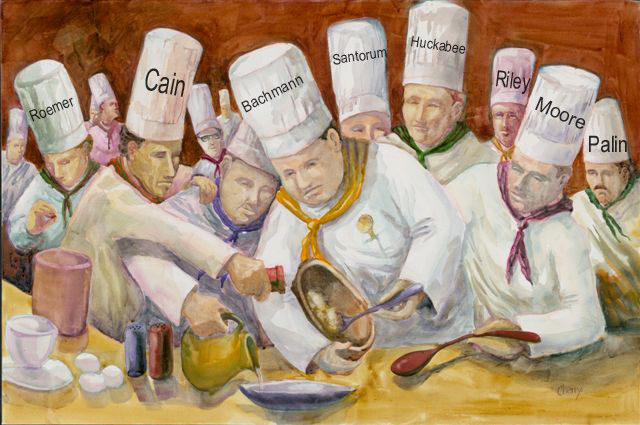Are There Too Many Cooks In Your Sales Kitchen?
Posted by
Jill Ryan on Thu, May 31, 2024 @ 03:50 PM
“Too many cooks in the kitchen” is a metaphor used often in sales. Just as if 6 people were trying to season the same meal, similar chaos can exist on client calls and in a marketing database. In the past, I have discussed utilizing the 30 minutes with your clients in an organized fashion when on weekly client calls. That same attention to detail and organization needs to be present in your outbound marketing campaigns.
Part of our responsibility is building out cold-call campaigns. Depending upon our client’s target market, we look to build a list of prospects and organizations representative of the verticals, revenue ranges, regions, and title levels of contacts that our clients are looking to engage with. In addition to targeted outbound programs, we also facilitate follow-up to trade shows, webinars, white papers and/or announcements our clients need feedback on. The success of those programs and campaigns heavily influence how they use their marketing budget.
Depending upon the engagement, our Business Development Representatives can often be following up on 5-10 different campaigns at a time. While a surplus of names is never a bad thing in this business, how you organize your time can be a challenge.
If you have a Business Development Rep following up on inbound marketing qualified leads 90% of the time, the other list sources may be getting neglected. Similar to the metaphor of six people seasoning the same meal, other tasks are going by the wayside. Who is setting the table? Who is prepping the veggies? They seem mediocre but they are part of the process.
A well balanced teleprospecting campaign will often yield opportunities with prospects that are early in the evaluation process, allowing you to be the first company at the table, while also reaching organizations that are slightly further along in the process, but might not have been aware of your offering and how it differentiates from others. It will also provide the opportunity to gain feedback on which verticals are the best fit for, or have the most need for your solution, and which are not. Putting those industries on the back burner helps an organization to focus their time and energy where it will be most effective.
So how do we do it? How do we achieve this balance?
I recently spoke with two of my BDR’s who are managing to follow up on website visits, cold-calling some new target-marketing contacts, as well as identifying active opportunities from a recent industry event with a large number of attendees. Our conversation provided new insight into ways of achieving the balance required for a successful marketing campaign.
For the event, they are strictly focused on getting these people live and gauging their interest. They are not getting caught up on voicemail and email, as the prospects are aware of the company and aren’t necessarily in need of an introduction. They are power dialing.
Both BDRs are shooting high with these prospects, connecting at the C-level, and then being referred down if need be. They are solely focused on having follow up conversations with decision makers and qualifying these prospects in our out.
For the other campaigns, the reps are using their CRM homepage to organize follow up tasks. They are bringing in a balanced portion of tasks to reach out to these companies and try to identify decision makers dropping both voicemails and emails. They understand the sense of urgency with website hits and are following up on them immediately, gauging their interest, qualifying the leads, and offering to schedule a discovery call with sales when it makes sense. They are flagging nurture accounts from previous webinars as “high priority” so they can remain in touch with these prospects 3-6 months down the road.
Running several types of outbound calling programs at one time provides me with meaningful, well balanced data, which I’m able to organize by list source and report on for my clients. I can share a spreadsheet of activity, quality connects and opportunities passed from each vertical and event, and share exactly what the audience is saying. Our efforts provide additional ROI on marketing campaigns and help our clients to better understand where they should focus their future programs.
If you try something new and fail, you can’t get that lost time back. If all of your eggs were in one basket, this can lead to major problems. I find that admitting to defeat is a lot easier when you can transition that conversation to “but we have found this from XYZ.” With the right balance, you can confidently discuss areas of opportunity and focus on moving forward. Without the right balance you are apologizing for lost time.
If you are going to have “too many cooks in the kitchen” in terms of running multiple campaigns at one time, work on achieving a balance so that everything gets the right amount of attention. If you are forced to eat over-seasoned chicken, let’s hope the table is set and the sides are delicious.